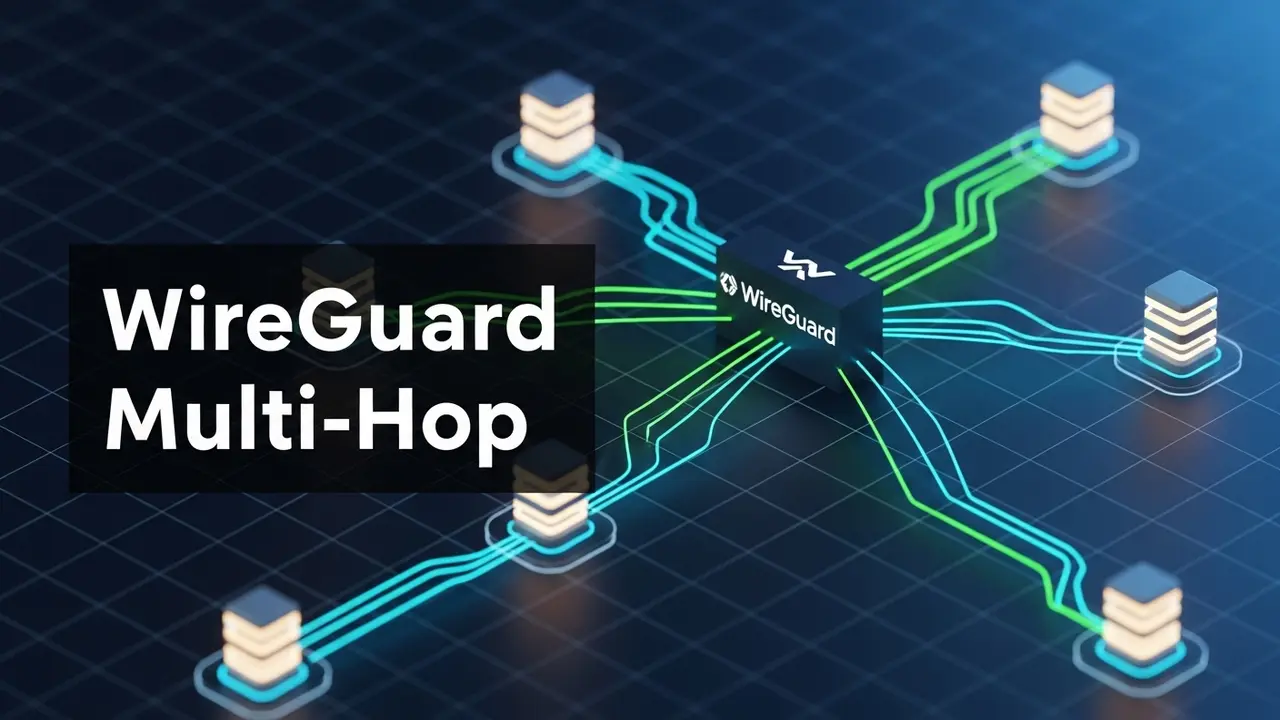WireGuard Multi-Hop: Because One VPN Hop Is Like Using a Paper Door
I used to think my single-hop VPN was enough. Then a friend in infosec pinged me one Friday night: “Dude, your exit node is in the same city as your ISP’s data center. That’s… not great.”
He was right. One hop = one subpoena away from my browser history. So I rebuilt everything with WireGuard and a three-node mesh. Took two hours, a pot of coffee, and zero headaches. Here’s the exact recipe so you can copy-paste your way to real privacy.
Why One Hop Fails You (Every Single Time)
Picture a tunnel with one guard at the entrance. If the guard gets sleepy, bribed, or raided, the tunnel collapses. That’s your current VPN.
What happens behind the scenes:
- The server logs your real IP.
- Your traffic goes out the same exit every time.
- If the provider cooperates, your history is an open book.
That’s not paranoia—that’s Monday morning for any three-letter agency.
The Fix: A Three-Node WireGuard Mesh
Instead of one guard, you hire three. Each sees only the hop before and after. Even if one node spills, it only knows half the story.
The payoff:
- No single point of failure.
- Latency under 50 ms if you pick smart locations.
- systemd restarts any node that crashes while you sleep.
What You’ll Need
Three cheap VPS boxes, any distro. I went with:
- Frankfurt ($3/month)
- Amsterdam ($3/month)
- London ($3/month)
Open ports 51820/UDP and 22/TCP in each firewall. That’s it.
Step-by-Step Build
1. Install WireGuard
sudo apt update && sudo apt install wireguard resolvconf -y2. Make Keys (One-Liner)
wg genkey | tee /etc/wireguard/private.key | wg pubkey | tee /etc/wireguard/public.key
chmod 600 /etc/wireguard/private.key3. Wire Up the Mesh
Each node gets a simple file: /etc/wireguard/wg0.conf
Node A (Frankfurt):
[Interface]
Address = 10.0.0.1/24
PrivateKey = <Frankfurt-priv-key>
ListenPort = 51820
[Peer] # Amsterdam
PublicKey = <Amsterdam-pub-key>
AllowedIPs = 10.0.0.2/32
Endpoint = <Amsterdam-IP>:51820
PersistentKeepalive = 25
[Peer] # London
PublicKey = <London-pub-key>
AllowedIPs = 10.0.0.3/32
Endpoint = <London-IP>:51820
PersistentKeepalive = 25Swap keys and IPs for Node B and Node C. Yes, it’s copy-paste boring—that’s the point.
4. Turn on IP Forwarding
sudo sysctl -w net.ipv4.ip_forward=1
echo "net.ipv4.ip_forward=1" | sudo tee -a /etc/sysctl.conf5. Add NAT So Packets Know Where to Exit
sudo iptables -t nat -A POSTROUTING -o eth0 -j MASQUERADE
sudo apt install iptables-persistent -y # save rules forever6. Let systemd Babysit the Tunnel
sudo systemctl enable wg-quick@wg0
sudo systemctl start wg-quick@wg0Watch the logs live:
journalctl -u wg-quick@wg0 -fSpeed Tweaks Nobody Tells You
Geographic cheat sheet: Put nodes within 500 km of each other. My Frankfurt → Amsterdam → London path adds 6 ms total. That’s less than the lag between my mouse and monitor.
Turn on BBR congestion control (one-liner):
echo -e "net.core.default_qdisc=fq\nnet.ipv4.tcp_congestion_control=bbr" | sudo tee -a /etc/sysctl.conf && sudo sysctl -pLock It Down
- SSH only from your home IP:
sudo ufw allow proto tcp from YOUR.HOME.IP to any port 22 - Keys stay at
600permissions. No excuses. - Set a weekly cron job to patch:
apt update && apt upgrade -y.
When Things Break
No handshake? Run sudo wg show—you’ll see if the peer’s endpoint is wrong or UDP is blocked.
Node down? systemctl restart wg-quick@wg0 on the dead box. systemd brings it back in 3 seconds.
Scale It Later (Zero Pain)
Add a fourth node in Tokyo? Just:
- Create keys.
- Add another
[Peer]block to each node. - Restart the services.
No re-cabling, no drama.
Bottom Line
One hop is hope. Three hops is certainty. Two hours of setup buys you a network that never blinks, even when governments knock. Build it tonight, sleep better tomorrow.
Questions? Open an issue on the WireGuard docs repo—the community is fast and friendly.







